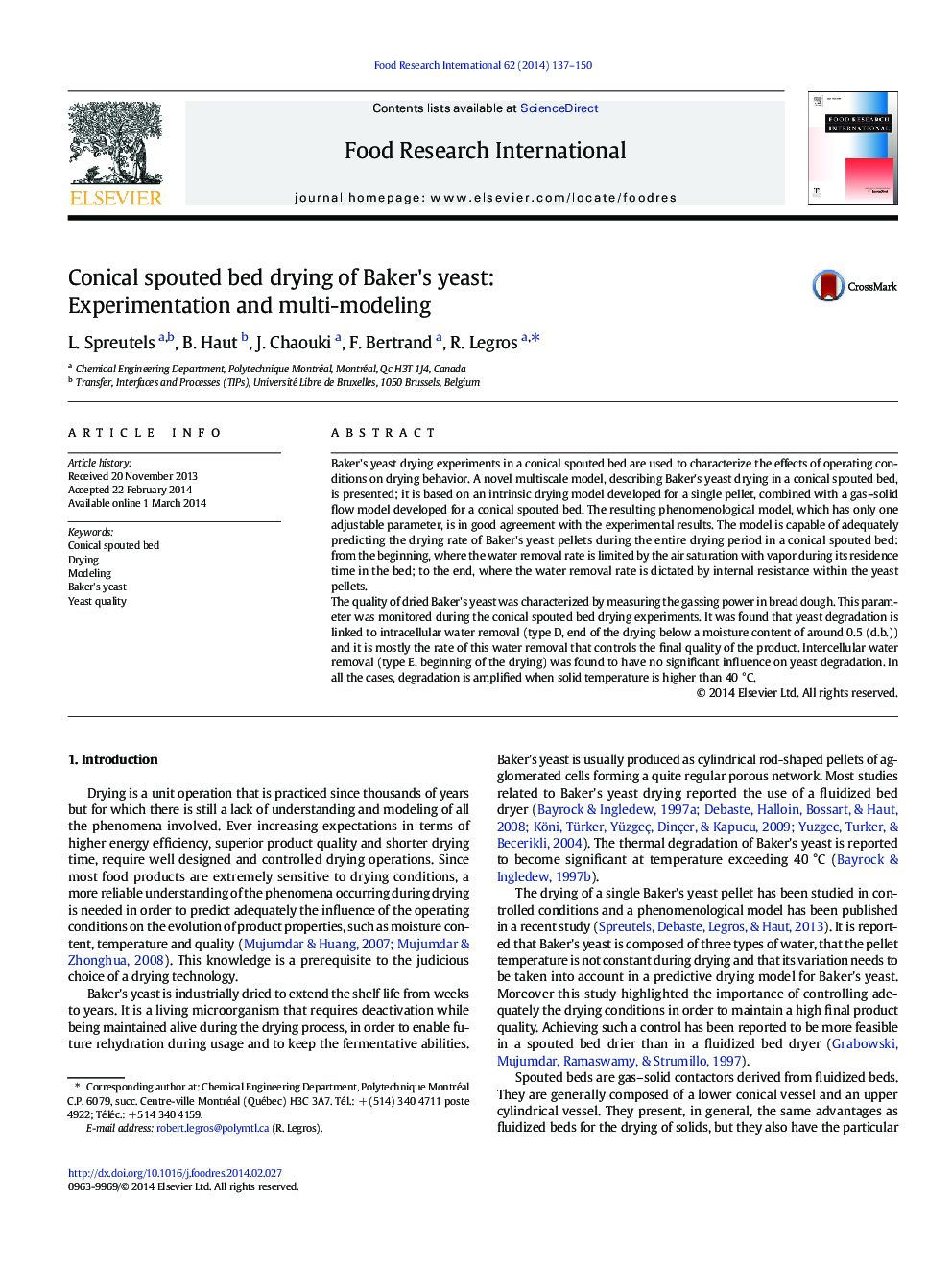| کد مقاله | کد نشریه | سال انتشار | مقاله انگلیسی | نسخه تمام متن |
|---|---|---|---|---|
| 6395761 | 1628482 | 2014 | 14 صفحه PDF | دانلود رایگان |
- Air saturation with water limits the drying rate at the beginning of the process.
- Yeast quality, operating conditions and phenomena inside the yeast are linked.
- Water removal limited by transport phenomena is modeled by a single equation.
- Conical spouted bed drying is successfully modeled through a multiscale approach.
- The proposed model for conical spouted bed drying has a single adjustable parameter.
Baker's yeast drying experiments in a conical spouted bed are used to characterize the effects of operating conditions on drying behavior. A novel multiscale model, describing Baker's yeast drying in a conical spouted bed, is presented; it is based on an intrinsic drying model developed for a single pellet, combined with a gas-solid flow model developed for a conical spouted bed. The resulting phenomenological model, which has only one adjustable parameter, is in good agreement with the experimental results. The model is capable of adequately predicting the drying rate of Baker's yeast pellets during the entire drying period in a conical spouted bed: from the beginning, where the water removal rate is limited by the air saturation with vapor during its residence time in the bed; to the end, where the water removal rate is dictated by internal resistance within the yeast pellets.The quality of dried Baker's yeast was characterized by measuring the gassing power in bread dough. This parameter was monitored during the conical spouted bed drying experiments. It was found that yeast degradation is linked to intracellular water removal (type D, end of the drying below a moisture content of around 0.5 (d.b.)) and it is mostly the rate of this water removal that controls the final quality of the product. Intercellular water removal (type E, beginning of the drying) was found to have no significant influence on yeast degradation. In all the cases, degradation is amplified when solid temperature is higher than 40 °C.
Journal: Food Research International - Volume 62, August 2014, Pages 137-150
